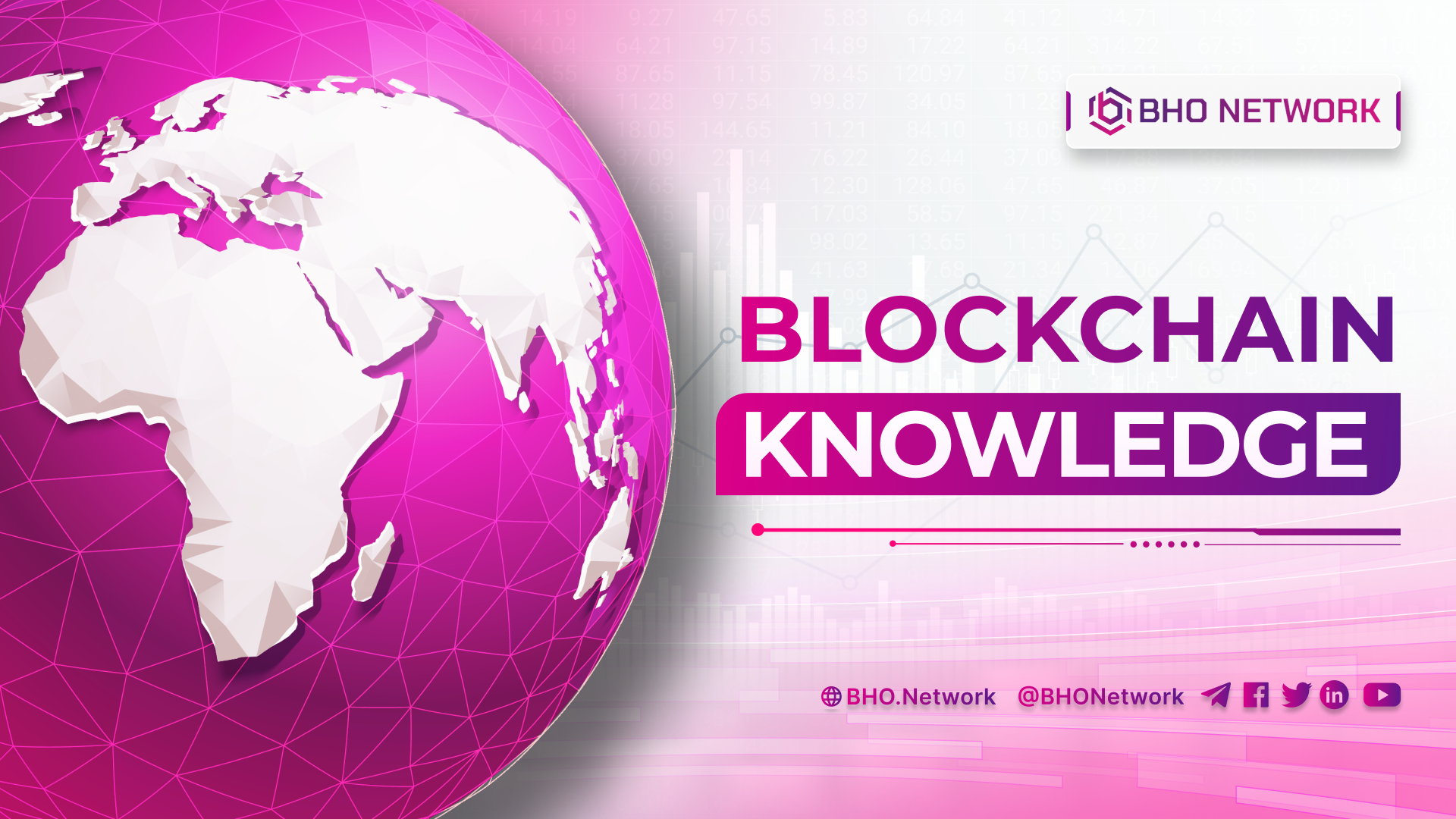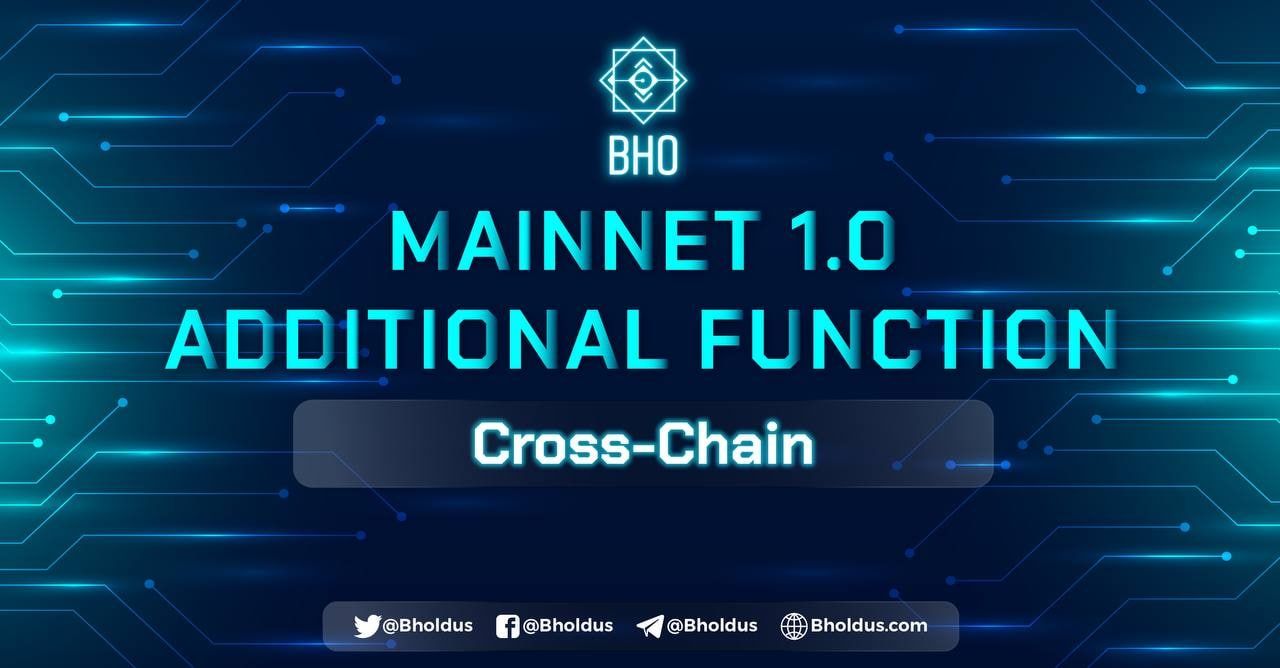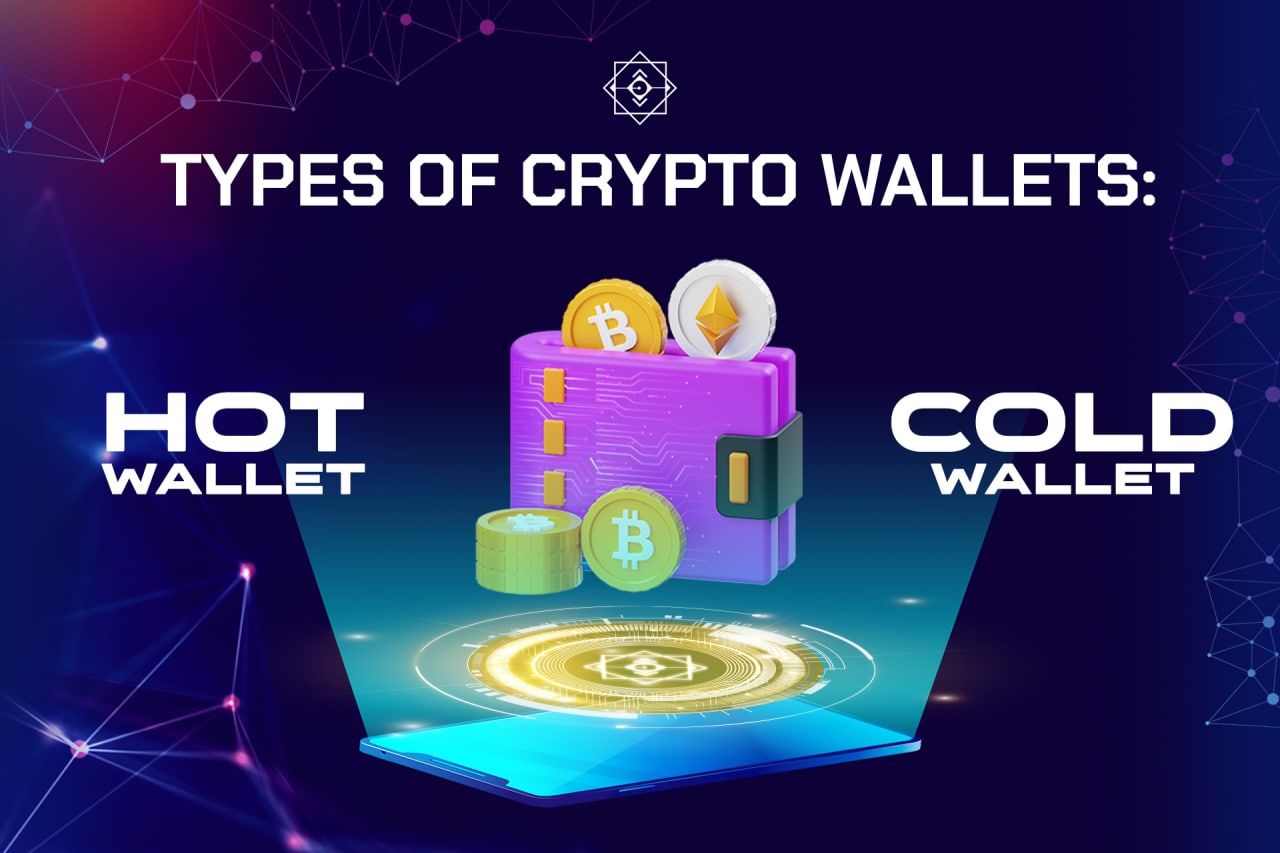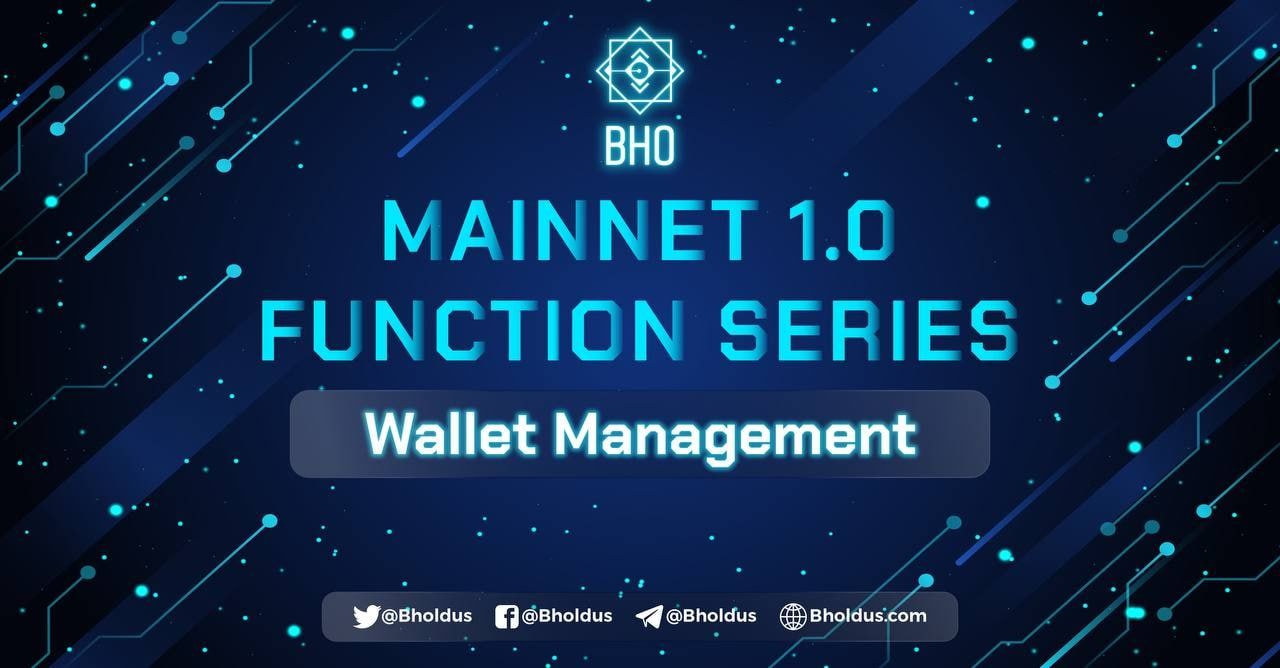- Blog
- Crypto News
- What is EVM? Everything about Ethereum Virtual Machine
What is EVM? Everything about Ethereum Virtual Machine
- 1. What is EVM?
- 2. EVM Blockchain is what?
- 2.1 Benefits for users
- 2.2 Benefits for Developers & Project Teams
- 3. Analysis of EVM Blockchain
- 3.1 Layer 2 Solutions
- 3.2 Standalone EVM Blockchain
- 3.3 Risks and limitations of EVM Blockchain Although
- 3.4 Two types of projects running multiple EVM Blockchain
- 4. Use cases of EVM
- 4.1 ERC-20
- 4.2 Exchange Decentralized
- 4.3 ERC-721 Token
- 5. What is Non-EVM Blockchain?
- 5.1 Definition
- 5.2 Understanding benefits and limitations
- 6. Opportunities of Non-EVM Blockchain Projects
What is EVM? Surely, those who have ever learned about Ethereum will be no strangers to the Ethereum Virtual Machine (EVM). Let's learn more about EVM Blockchain and Non-EVM Blockchain with BHO Network through this article!
1. What is EVM?
EVM (Ethereum Virtual Machine) is a virtual machine Ethereum. You can understand that EVMs have an intermediary role in the transaction between smart contracts on the Ethereum network. Each Ethereum Node will be equipped with its own EVM to ensure the security and decentralization of the network.
Normally, the Ethereum's smart contract will be written in Solidity programming language, so EVMs translate code to bytecode. So what is Bytecode? They are like the source code of the computer and will be saved opcodes so that Ethereum can directly understand and execute control commands easily.
2. EVM Blockchain is what?
EVM Blockchain is Blockchain compatible with the Ethereum virtual machine, meaning that smart contracts on the Ethereum network can run on that Blockchain. To be more specific, with just a little tweaking, Ethereum dapps can run on EVM Blockchain.
Some examples of EVM Blockchain that readers should know are Fantom, Celo, Avax C-Chain, and BSC.
With more than a hundred projects from small to large, the total TVL of the system is 158 billion USD, accounting for more than 65 % of market DeFi. This has shown that Ethereum is a fertile ground, and many other Blockchains want to be linked to it.
After learning about the concept of EVM and the EVM Blockchain, let's see how the Ethereum virtual machine benefits users and the project development team.
2.1 Benefits for users
Feeling of familiarity: If you have ever used Ethereum Dapps, it will certainly be easy to manipulate the products at EVM Blockchain by the developers who will keep their interface and features intact.
Solve gas fees and transaction speed:
- Currently, Ethereum is facing limitations that need to be overcome, such as too high transaction fees (which can be up to 100 USD if this network is congested) or prolonged transaction speed. These will significantly affect your experience!
- In addition, the following Blockchains will be more prominent in technology and have been resolved by the developer to solve the remaining limitations of Ethereum. More specifically, when compatible with EVM, the scalability of these Blockchains is further strengthened.
More utilities and new products: These new Blockchains will bring technological advantages when many new ideas are developed.
2.2 Benefits for Developers & Project Teams
Doesn't take time to get used to: For users, whether new or proficient, it will take a lot of time to study and get used to a new programming language. However, with EVM technology, consumers can easily use between Blockchains more easily.
-
Brand Identity: The product of the project team, when deployed on Blockchains, the interface remains the same or changes depending on the project's requirements. So instead of creating a new project, it only takes a minor modification to be able to implement a project on Ethereum on top of EVM Blockchain.
-
Products will be replicated: Instead of being limited to a particular Blockchain, the project team's products will be developed on other Blockchains to expand their influence and attract more people.
3. Analysis of EVM Blockchain
As in the previous sections, you have understood the benefits of EVM to the project team and users and how EVM works. So what EVM Blockchain is there in the crypto market today? There are two types of EVM Blockchain: Layer solutions and EVM Blockchain that run independently.
3.1 Layer 2 Solutions
At the moment there are many EVM Blockchain. The most mentioned are layer 2 solutions specifically for Ethereum because they are built on top of this and quickly absorb the advantages and overcome the disadvantages.
Through the image above, you can see details of scaling solutions for Ethereum. However, BHO Network offers only the most major projects and has had recent notable successes:
- Starkware: Derivatives platform dYdX was built on Starkware and were highly successful, although before, Ethereum didn't get much attention. Therefore, Starkware has affirmed its name in the crypto market.
- Arbitrum: Currently, many projects choose Arbitrum to expand their products. Some outstanding projects such as Sushi, AnySwap, and Synapse cannot be ignored. Most significantly, Abracadabra and Curve Finance are leading the DeFi trend.
It can be seen that Ethereum's layer 2 solutions are having certain successes when projects on Ethereum have been able to deploy their own platforms on top of solution layers. This is like promoting the entire Ethereum ecosystem and layer 2 projects in particular.
3.2 Standalone EVM Blockchain
Unlike the Layer 2 decompression project on Ethereum, the EVM Blockchain running independently, build its Blockchain platform and design, so there will be a clear difference. Examples of standalone EVM Blockchain currently running are Binance Smart Chain (BSC), Polygon, Near Protocol,...
BNB Chain:
-
BNB Chain is a typical example of an EVM Blockchain that has achieved a lot of success with more than 19 billion USD worth of TVL, ranking second only to Ethereum.
-
The BSC ecosystem currently has more than 900 DeFi applications, including more than 50 DEXs exchange projects. The most successful must be the DEX PancakeSwap project with TVL periods up to more than 5 billion USD.
However, over 50 DEXs in the Binance Smart Chain almost copied the fork from other projects via EVM. This has caused the fragmentation of TVL and diluted the ecosystem when users have too many similar products.
Polygon:
-
At first, Polygon was only considered as a layer two solution of Ethereum. Still, now, this network can pay transaction fees with MATIC (their main token), so it is considered a Blockchain separate from Ethereum.
-
Typically is the NFT marketplace OpenSea project, developed on the Ethereum ecosystem and has been very successful at the moment with the volume up to nearly 3.5 billion USD and on Polygon with more than 50 million USD. This shows that OpenSea has begun to expand the market and put users' interests first.
Near Protocol: Project Aurora EVM is considered an essential piece of Near Protocol because it makes this project compatible with EVM. This means that Aurora EVM can attract Dapps to the Near Protocol ecosystem to develop their products.
Through three EVM Blockchain examples, you know the advantages of being compatible with EVM. BHO Network would like to summarize the content as follows:
- Attracts a lot of projects: At this time, the Dapps will, in turn, "pour" to the EVM Blockchain. Like the Aurora example before, many projects have been deployed on Near Protocol after completing the EVM compatibility into Near.
- Attract developers: They are the key builders whose mission is to make a massive contribution to the long-term ecosystem and product development.
- Take advantage of Ethereum's network effect: Everyone knows that Ethereum is the largest ecosystem, with thousands of large and small projects on Defi and NFT. Therefore, these projects are all flocking to other Blockchain, attracting much attention and great resonance in the community.
3.3 Risks and limitations of EVM Blockchain Although
EVM Blockchain has many advantages, but there are still limitations and disadvantages such as:
-
Reducing security & risk of being hacked: EVM is a technology that can help projects deploy on many blockchains. However, when it was hit by an inter-chain attack like Poly Network in August 2021, this caused tremendous damage.
-
Fragmented liquidity: In Any project that is present in many Blockchains, liquidity will only exist in that Blockchain and cannot be linked together. Although there is an association and bridge to transfer tokens between Blockchains, it is limited in cost, time, and high-security risk.
Also, Apps DeFi has low liquidity, which significantly affects the interests and user experience.
- Audit multiple smart contracts on multiple Blockchains:
- In addition, the cost of auditing smart contract is becoming more and more expensive when many projects The current project wants to build certain credibility, the more they understand the audit is a very necessary thing.
- According to Ulam (a company specializing in cooperation with the Algorand project), the price of the audit smart contract on Ethereum ranges from $7500 to $45,000, especially some companies ask for up to $100,000.
3.4 Two types of projects running multiple EVM Blockchain
In particular, you can see that there will be two types of projects running a lot on the EVM Blockchain platform, which can be said as:
Small projects:
- These are direct product development projects at many different Blockchains. It can be said that they are a double-edged sword. Maybe you will find a hidden gem, or the project is just using this to create a dreamlike vision, but not feasible.
- Moreover, the limitations of these small projects are mainly limited human resources. Still, they want to expand more Blockchain simultaneously, leading to poor quality products and greatly affecting the user.
- As for the advantage, it will be inclined to Marketing when it is proved that the team's qualifications and expertise, as well as the ambition of the whole team and the product, can reach more users.
Has a standing in a Blockchain: Unlike the small projects above, these projects have products that fully meet the needs of consumers and are accepted by them. At this time, product development is better. The projects have many advantages such as good products, supported by users.
One of the most recent examples is that Aave has landed on the Avalanche Blockchain (which is compatible with EVM). Immediately, Aave attracted more than 1 billion USD worth of TVL on the first day, plus the support from the Avalanche Rush program, so it took the No. 1 position on TVL in this ecosystem.
In short, becoming a trend present in many Blockchains (Multi) is inevitable, while the new generation Blockchain possesses too many outstanding advantages compared to the previous generation.
4. Use cases of EVM
You must have already figured out the term EVM, but how to use them effectively?
4.1 ERC-20
Token Code ERC-20 is a type of token that can be converted between addresses, with the number definition and value being exactly the same. Smart contracts always follow the data structure on the EVM used to generate the ERC-20 Token.
4.2 Exchange Decentralized
A decentralized exchange that implements smart contracts to allow users to exchange ERC-20 tokens.
The contracts above are called automatic market makers (AMMs). They allow users to contribute to the pool of specific tokens without the control of any third party.
4.3 ERC-721 Token
The standard of another widely popular token is ERC-721. These smart contracts are used to mint NFTs, tokens of unique value on the entire Blockchain chain.
The most significant use case for the ERC-721 token is creating unique works of art. Also, GameFi projects like Axie Infinity and God Unchained both use this token to collect in-game information.
5. What is Non-EVM Blockchain?
After learning about EVM Blockchain, let's explore Non-EVM Blockchain.
5.1 Definition
Non-EVM Blockchain is completely different from EVM Blockchain. These are Blockchains that are not compatible with EVM. Some Non-EVM Blockchain can be mentioned such as Cardano, Solana, Algorand, and Terra.
The main feature of Non-EVM Blockchain is using a programming language smart contracts completely different from Solidity on Ethereum, specifically:
- Cardano uses Haskell/Plutus.
- Solana uses Rust/C/C++ again.
- Terra uses Rust.
- Algorand uses TEAL.
You can see that projects on Ethereum are very difficult to get on the Non-EVM Blockchain. If you want, you have to rebuild from scratch and code in smart contracts programming language for each Blockchain. But this is not what any project wants to do.
5.2 Understanding benefits and limitations
After understanding the concept of Non-EVM Blockchain, we will learn more about its main advantages and limitations:
-
Benefits: Non-EVM Blockchain owns a separate Dev community, and they will be prioritized to promote development.
-
Limits: Besides, Non-EVM Blockchains always ask a tough question to answer "How to build a strong Dev community." Because they are the builders of an entire ecosystem, each Non-EVM Blockchain will have its strategy and development direction.
6. Opportunities of Non-EVM Blockchain Projects
The current new generation Blockchains such as Solana, Terra, Algorand, and Flow are all platforms with superior, innovative technology and great potential to deploy Dapps. So what are the opportunities for these projects on the Non-EVM Blockchain?
Paying attention to the stage of a foundational Blockchain is essential because each Blockchain will have its strategies and plans to promote the development of the ecosystem or prioritize projects through EVM.
In short, focusing on a Non-EVM Blockchain is necessary to have more chances of success in the ecosystem because, at this point, the project captures the whole system's market share before other projects fall.
Thus, it is necessary to focus on one layer to solve the remaining layer problems.
Sushi is a very successful project on the Ethereum ecosystem, integrated with many features and already present in 13 blockchains. In essence, Sushi is already a multi-chain, but not every user can use all the features of Sushi on Blockchain.
As can be seen, we need to focus on providing the right product for the user and the market in a Blockchain.
Risks and limitations of EVM Blockchain mentioned in the previous section include security, the possibility of hacking, distributed resources, fragmented liquidity, and increasingly high audit prices.
Through the above disadvantages, it is necessary to focus on a particular Blockchain and build products on the very foundation of that Blockchain.
In general, when projects focus mainly on one Blockchain, there are many opportunities and success rates from there, compared to becoming more complicated when distributing everything.
Through this article, BHO Network has provided detailed information to answer the question What is EVM? If you have queries, please contact us, and don't forget to follow the website to update other interesting topics regularly!
Published on August 02, 2022
Tagged topics







